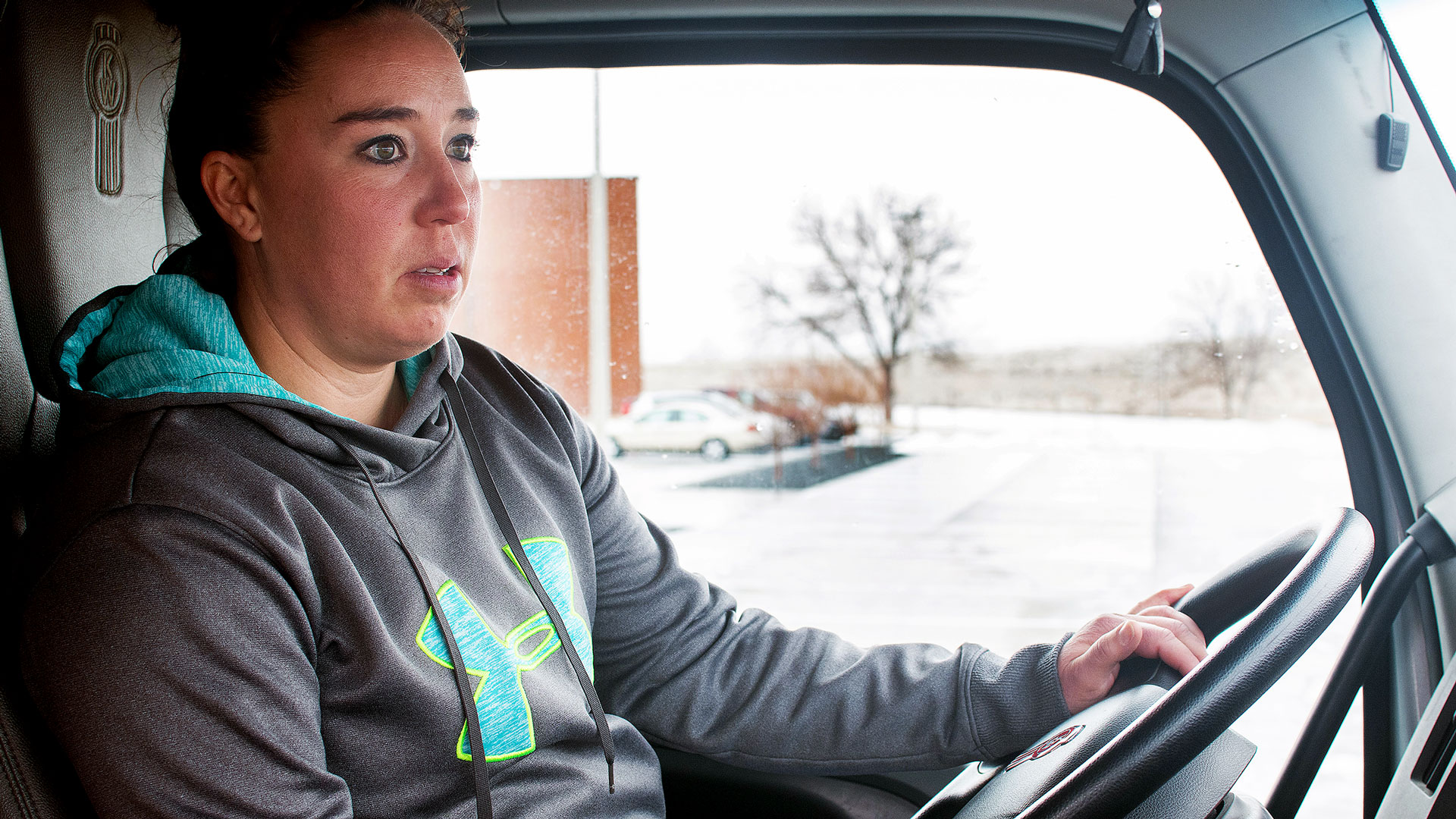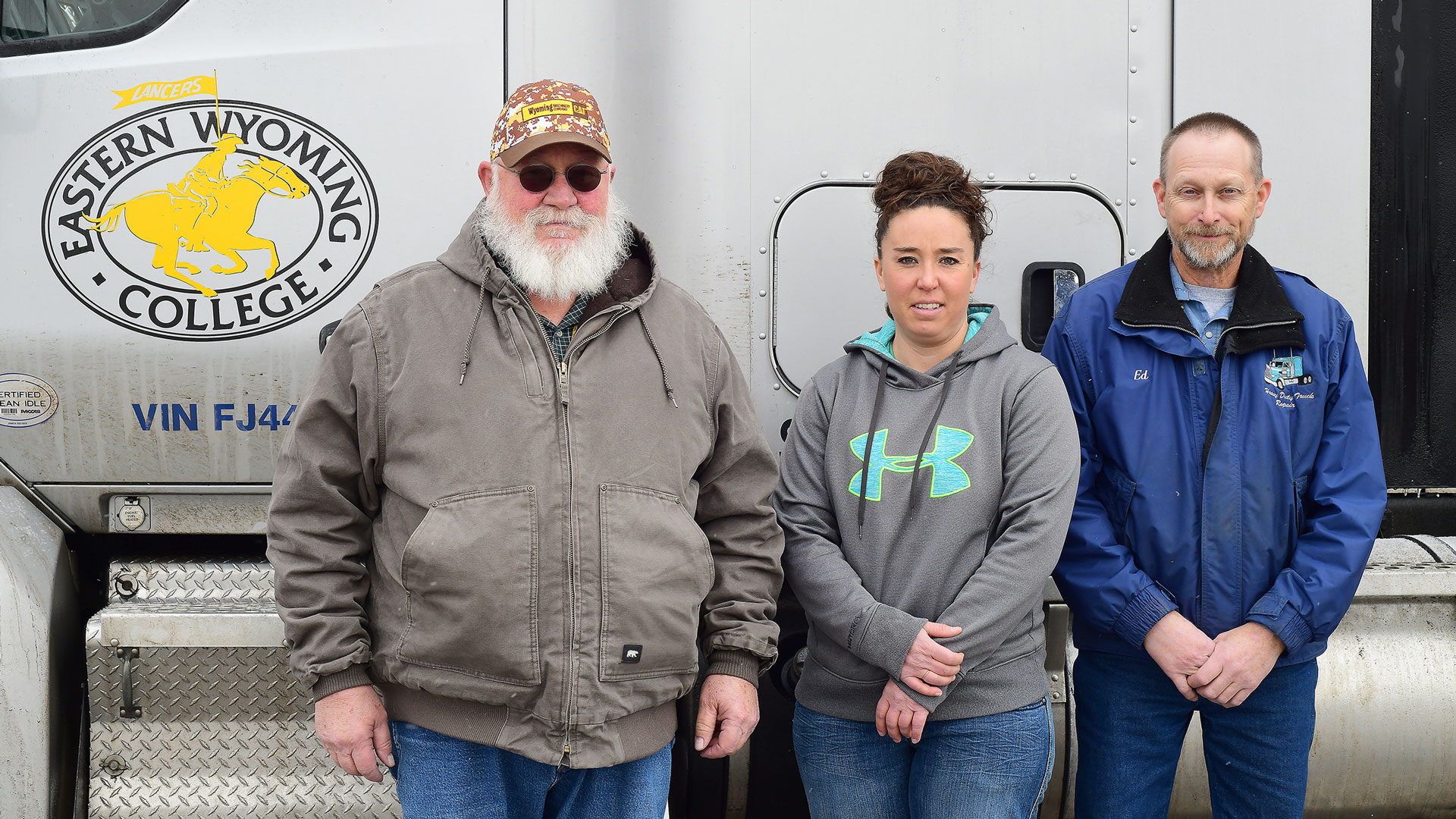Producing High Quality Drivers at EWC
Rachel Padilla climbs into the cab of the 18 wheeler in Eastern Wyoming College’s parking lot on the Torrington Campus as she prepares to practice her driving skills.
Padilla already has over 40 hours of experience behind the wheel and will soon be taking her CDL drivers test. Upon passing the test she will be a licensed truck driver.
The first time she drove the semi she said, “I was very nervous. The size, the shifting, but today I’m much more comfortable behind the wheel.”
The CDL Program at EWC hit the road in the fall of 2022 with a few changes, it is now under the direction of CDL Program Instructor/Specialist Ed Kimes. “Our goal is to restore excellence and professionalism in the transportation industry,” Kimes said. “We train students from beginning to end whether they have any experience or not.”
Kimes has been an owner/operator of a trucking company working as a mechanic and driver for 35 years, he said. “I come from a family of truck drivers. My dad was a truck driver/heavy equipment operator and logger. My grandpa owned a trucking company hauling logs. First with a mule team and later with trucks.”
Also working in program is part-time CDL Instructor Wayne Anderson who has over 40 years of experience on the road. The program works with a number of different part-time CDL Instructors so classes can be offered to fit each student’s schedule.
“It is a revolving system,” Kimes said. Students start and finish as it fits into their schedule.
Presently, there are seven students in the program, with four or five ready to start.
The program combines theory and time behind the wheel to prepare students for a Class A (tractor/trailer) and a Class B (straight truck) license. Students can also get hazmat and passenger endorsements.
Theory is taught online, Kimes said. There are 85 theory lessons covering everything from regulations, safety, winter driving, log books, human trafficking, and “everything theory wise you need to drive.”
The behind the wheel part of the course amounts to between 30-50 hours behind the wheel training on the skills course at the college and on the road,” Kimes said.
Presently students have a skills course they can use that is set up in a parking lot at EWC. In the near future Kimes would like to build two permanent skills courses on the Torrington Campus.
“We want to become a full service training center, that can take students from beginning to end with a training and testing center here on campus,” he said. “We are working on getting two instructors to be certified testers.
The college is also partnering with a number of different companies across EWC’s service area who have agreed to interview students upon their completion of the program. “We had two students already go through the program, test out, got their license and are working for companies in the area,” Kimes added.
Padilla started the program in December and did her theory lessons over Christmas break. When she returned to campus she continued building her hours behind the wheel.
There is no real set length of time to complete the CDL course, Kimes said. It is up to the student and Padilla is on course to finish and take her skills test very soon.
“I was wanting something with job security and that would give me the ability to get a job wherever I would need one,” she said. Before taking the course Padilla had been around trucks, but never driven one before.
There is a huge shortage of truck drivers today, according to the American Trucking Association. The trucking industry is headed for a shortage of 160,000 drivers by 2030 and there is a need for one million new truck drivers over the next 10 years. “In 40 years on the road I’ve never had to search for a job,” Anderson said. “Trucking is a very stable industry to be in.”
A truck driver can earn anywhere from $50,000 to $100,000, he added. How much you make depends on how hard you want to work, Anderson added. There are companies hiring at $80,000 a year.
“I’ve never been unemployed,” Kimes said. “As an owner/operator I kept my truck rolling all the time.”
Kimes, Anderson, and the other part-time CDL instructors, Kimes said, “have been in it (trucking) so long we bleed diesel fuel.”
After completing the program and getting your license he said you are “not limited to trucks.”
“It’s up to your imagination,” Anderson added. “You can drive a tour bus for a big band, haul a NASCAR team, all kinds of possibilities are available.”
“You can live anywhere,” Kimes said and you can travel anywhere if you want. Trucking is not a job, it’s a lifestyle. We (Kimes and Anderson) have been fortunate to have been trained in and have experience the lifestyle. We now want to pass it on to the next generation.”
However, both Kimes and Anderson said, “We don’t want to turn any students out that we don’t feel confident that they will be an excellence professional in the transportation industry.”
“With the experience the instructors here have,” Padilla said, “you can be confident that when you leave you will be road ready.”
For more information about the CDL program at EWC call Community Education Director Donna White at 307-532-8213 or email her at dwhite@ewc.wy.edu. Before starting the program students will need a DOT Physical, take a drug test, and have a CLP (Commercial Learners Permit).



